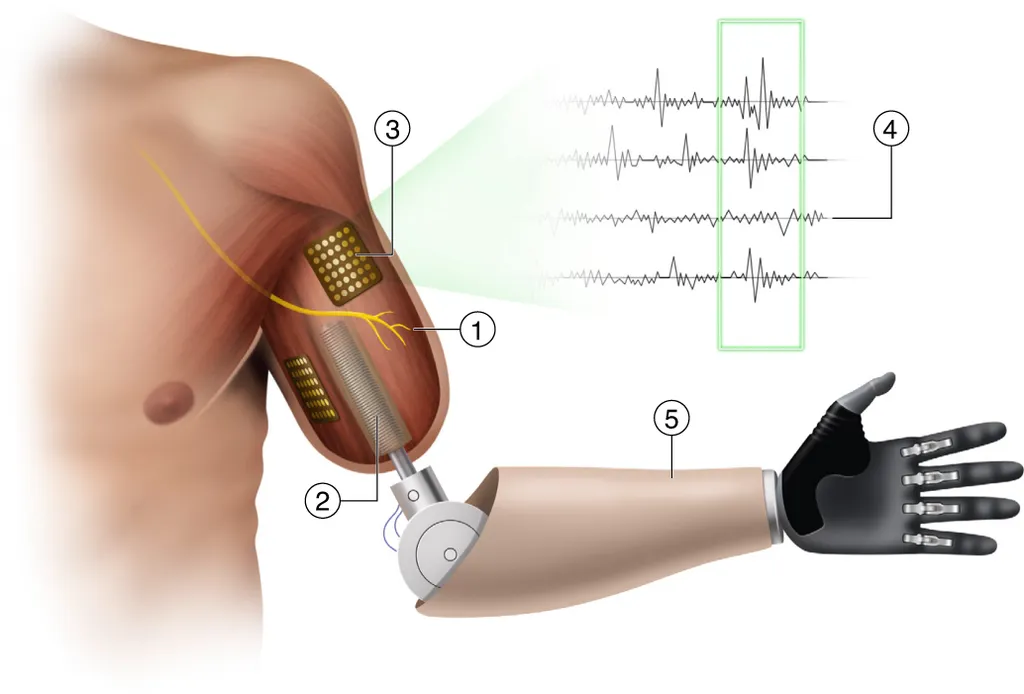In a significant stride towards enhancing the functionality and comfort of bionic limbs, researchers have developed a flexible, wearable myoelectric control system that promises to revolutionize the way prosthetic devices interface with the human body. This innovative system, detailed in a recent study published in the journal ‘npj Flexible Electronics’ (translated to English as ‘npj Flexible Electronics’), is the first of its kind to be fully flexible and compatible with both dry and wet electrodes, offering a reliable, low-noise, and high-comfort solution for bionic limb users.
At the heart of this breakthrough is a low-noise front-end circuit on foil, utilizing amorphous Indium-Gallium-Zinc-Oxide (a-IGZO) Thin-Film Transistors. This technology is optimized for multi-electrode sensing, ensuring precise and accurate readings of muscle activity. The design includes an autozeroed pre-charging buffer that minimizes offset and 1/f noise while maintaining an impressive input impedance of 841 MΩ at 50 Hz. The front-end achieves a remarkable 22 µVrms input noise, < −90 dBc crosstalk, and a 4.6 mV input offset, consuming a mere 55.3 µW per channel. Kyle van Oosterhout, the lead author of the study and a researcher at the Department of Electrical Engineering, Eindhoven University of Technology, explains the significance of this development: "Our system addresses critical challenges in bionic limb technology, particularly the need for a comfortable, flexible interface that can reliably capture muscle signals. This advancement could greatly improve the quality of life for amputees by providing more natural and intuitive control over their prosthetic devices." The researchers demonstrated the system's capabilities by using the captured EMG signals to drive an elbow musculoskeletal model, predicting the resulting human elbow flexion-extension moments. This data was then used to realize a closed-loop real-time control in a simulated bionic elbow joint, using both dry and wet electrodes. Experiments conducted with a series of movements showed a 20°rms error in angular control, highlighting the system's potential for practical applications. The implications of this research extend beyond the immediate benefits for bionic limb users. The development of flexible, high-performance electronic systems has the potential to impact various sectors, including the energy industry. For instance, flexible circuits could be integrated into wearable energy-harvesting devices, enabling more efficient and user-friendly solutions for powering portable electronics. Additionally, the technology could be applied to create advanced sensors for monitoring industrial processes, enhancing safety and efficiency in energy production and distribution. As the field of flexible electronics continues to evolve, this research paves the way for future developments in wearable technology, medical devices, and beyond. The study's findings not only represent a significant step forward in bionic limb technology but also underscore the broader potential of flexible electronics to transform various industries and improve lives. In the words of van Oosterhout, "This is just the beginning. The flexibility and performance of our system open up new possibilities for integrating electronics with the human body, creating more intuitive and responsive interfaces that can adapt to the needs of the user." As researchers continue to push the boundaries of what is possible, the future of bionic limbs and wearable technology looks brighter than ever.

